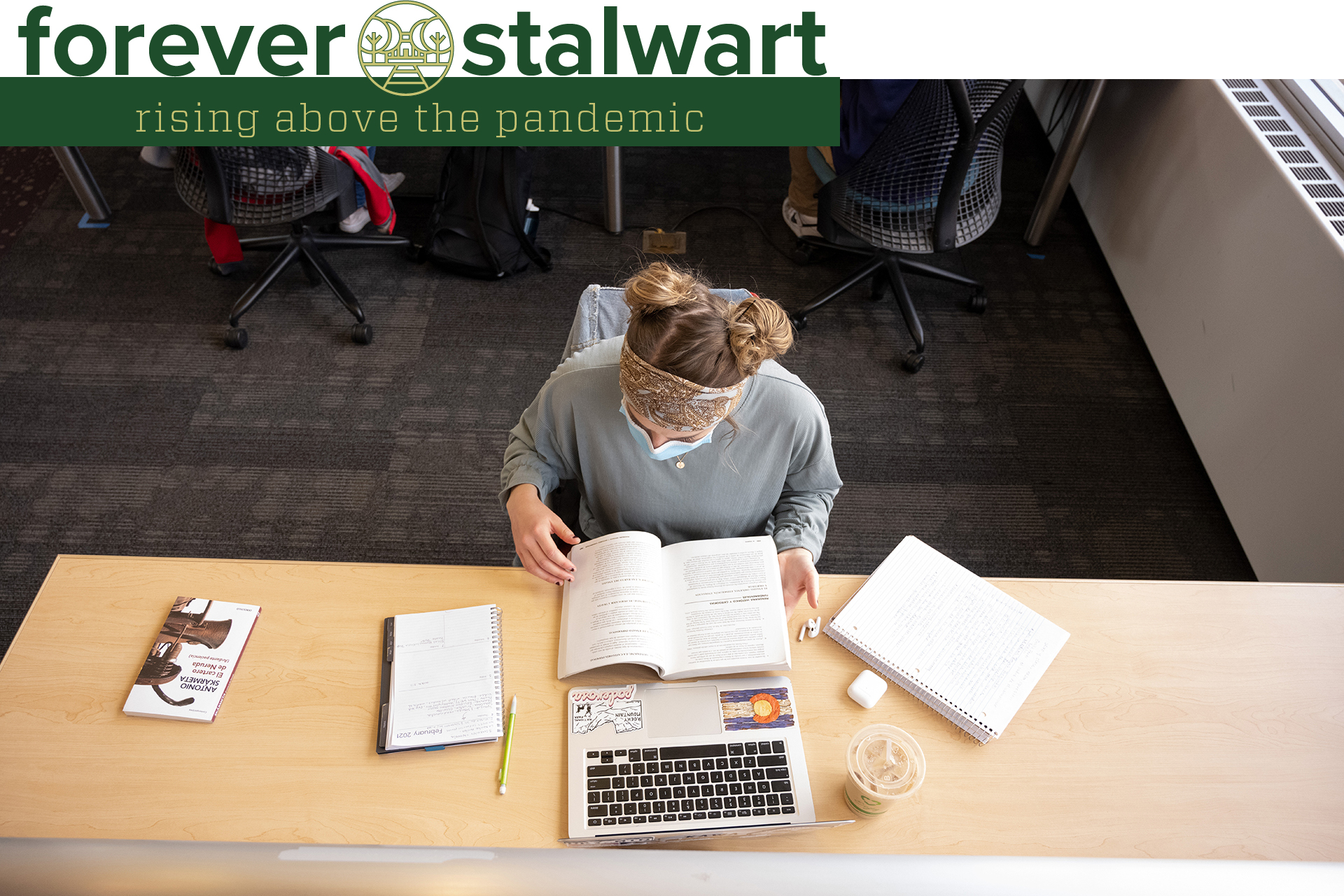When Colorado State University transitioned to remote learning about a year ago, one of the many challenges that IT staff faced was how to give students access to the software they needed in campus computer labs.

Gary Senseman, director of information technology for the Warner College of Natural Resources, recalled that the first priority to accommodate the increased demand from students logging on to the University’s IT systems from home was to boost server capacity. Warner doubled its server capacity in a short period of time, he says, but there was still an outstanding need for students to be able to log on to individual computers in labs to use software licensed by the University.
Eric Tisdale, the IT director in the College of Health and Human Sciences, shared a solution that he had discovered within the first month of remote learning. A company called LabStats had quickly developed a remote-access dashboard that basically shows students which computers in labs are not being used, and lets them choose an available computer to log into from off campus, connecting using a VPN, or virtual private network.
Not only did the solution make access easy for students, it alleviated some of the demand on the servers because students started logging in to computers that had been sitting unused in vacant labs. The University Libraries and others adopted the same approach.
“I heard about it from Eric,” Senseman said. “Before that, we had a lot of computers sitting idle. Probably half of them were not being used.”
Usage rate

Tisdale said his college saw about 800 student logins and around 1,200 hours of computer lab use per week, primarily from the departments of Design and Merchandising and Construction Management.
“It helped simplify the students’ experience in getting from their computer to a lab computer,” he said. “Offering it to students within a few weeks of going remote was a big part of the success.”
Senseman said that solution was just one of many examples of IT staff at CSU collaborating to overcome adversity.
“The IT community across CSU really came together during this time,” he said. “Academic Computing & Networking Services spearheaded an IT town hall, and we continue to meet as a group to this day. There was a lot of activity behind the scenes of IT staff coming together to look at these challenges we were all facing. In our distributed IT environment, we work in our colleges and interact to a certain extent, but we really needed to cross boundaries and talk to each other more.”
Additional challenges

Other solutions that the colleges faced included getting laptops into the hands of students who didn’t own a computer. John Engelking, the IT client services manager for the College of Business, said students in his college could check out laptops for remote use.
“We quickly had a mass ‘come check out a laptop’ session as well,” Senseman added.
Richie Nelsen, the IT director for the College of Business, said one solution implemented in preparation for fall hybrid courses was to install Microsoft Teams-enabled video conferencing systems in all of the college’s classrooms. These systems act as the eyes and ears of students participating remotely, and enable them to participate in class discussion in real time.
“Those will remain as we go forward, and we hope it leads to new pedagogy and a way for students to attend virtually if they can’t be in class for one reason or another,” he said.
Another challenge was helping students who didn’t have a good internet connection at home. In some cases, faculty recorded lectures and put them on external hard drives that could be given to students who couldn’t reliably get online.
“Some students said they had to come to campus to use CSU’s Wi-Fi,” Senseman said. “We were trying to provide technology for any situation students were in.”
‘As creative as possible’

“It got pretty complex pretty quickly,” Nelsen said. “We were just trying to get as creative as possible as we made workflows for faculty and students that were user-friendly, but also functional and reliable. But having collaborative meetings with all of the IT units across campus was incredibly helpful.”
All agreed that the cooperation was key.
“The people component of this is the most important part,” Tisdale said. “People came together to figure things out, and the LabStats solution was a great example of that.”
“That’s how I learned what the College of Business and the College of Health and Human Sciences were doing, and in many cases I said, ‘This looks like a perfect fit for us too,’” Senseman said. “We were really able to put our heads together and look for solutions that might fit for each of us. That was a really critical piece of this.”
Forever Stalwart: Rising Above the Pandemic
This article is part of the “Forever Stalwart: Rising Above the Pandemic” series, telling the inside stories of how the CSU Ramily has rallied its brilliant minds, great hearts, creativity and collaborative spirit to continue its land-grant mission and overcome the challenges of COVID-19 with innovation and resilience.
